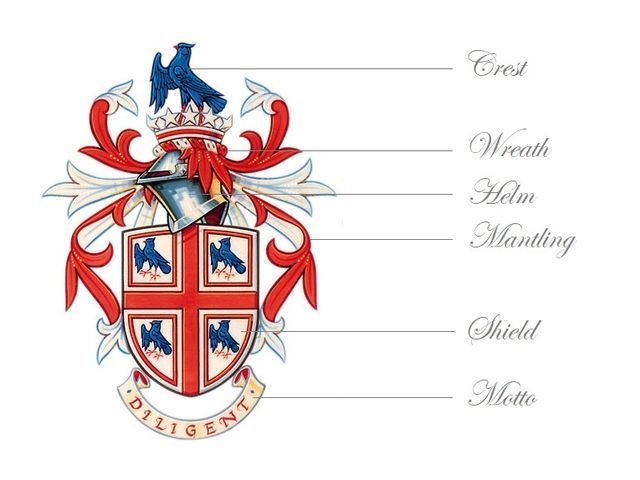Components of Arms
The elements composing an achievement of arms, derive from the equipment of a medieval knight. The visual representation of the entire armorial achievement drew on what a knight actually wore or, in the case of the shield, carried. Very often, “coat of arms” and “crest” are wrongly interchanged. Their meanings are actually precise. Collectively, an armorial achievement consists of, at a minimum, a shield, a crest, a wreath, a helm, mantling, and a motto.

Armorial achievement of the Foundation.
A shield, the actual “coat of arms,” with heraldic markings or devices (called charges). This is the most important part. The shield is the portion of the armorial achievement that must be unique to the armiger because no two knights should carry the same shield.
A crest was originally a three-dimensional object or device mounted at the top or crest of the helm atop the wreath that secured the knight’s cape to the helm.
A wreath (also torse) represents the twisting of the mantling, which represents the knight’s cape, affixed to the helm by the crest and is composed of the primary metal and color of the coat, as is the mantling.
A helm represents the knight’s helmet. The type of helm is determined based on the status of the armiger.
Often attached to the helmet and surrounding the shield is flowing material known as mantling, which is alludes to the material used to protect the knight from the sun's rays (it is now solely decorative).
A motto (or war cry), which can be changed at will, usually completes the coat of arms. Unlike a Scottish motto, it is not included in the grant.
Additionally, senior knights and leading corporate bodies are flanked by supporters (usually representations of real or imagined people or beasts). Armigers with members in recognized chivalric orders may have their medals displayed artistically.